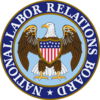Employees' Right to Strike Protected by the Region
Office of Public Affairs
202-273-1991
publicinfo@nlrb.gov
www.nlrb.gov
The Board concluded that an aluminum company’s decision to bar striking employees from returning to work until they pledged not to engage in such strike activity again provided “strong evidence of animus toward the protected conduct of striking” and supported the Region’s theory that an employee was unlawfully discharged. Nichols Aluminum, LLC, 361 N.L.R.B. No. 22 (8/18/14). The case arose in Davenport, Iowa which is part of Subregion 33’s jurisdiction. After employee strikers returned to work upon the end of a strike and were required by the employer to sign a “no strike” pledge, one of the strikers was discharged for what was termed by the employer as a threatening gesture, i.e. drawing his hand across his throat upon being startled by a non-striking employee driving a forklift. However, the Region proved at hearing the employer had not enforced its “Zero Tolerance” policy in past instances involving more serious conduct. Accordingly, the Board found in light of the Region’s strong case of discrimination based on protected union activity that the employer had failed to show it would have discharged the employee in the absence of his NLRA-protected activity.


